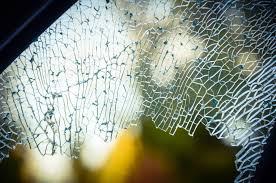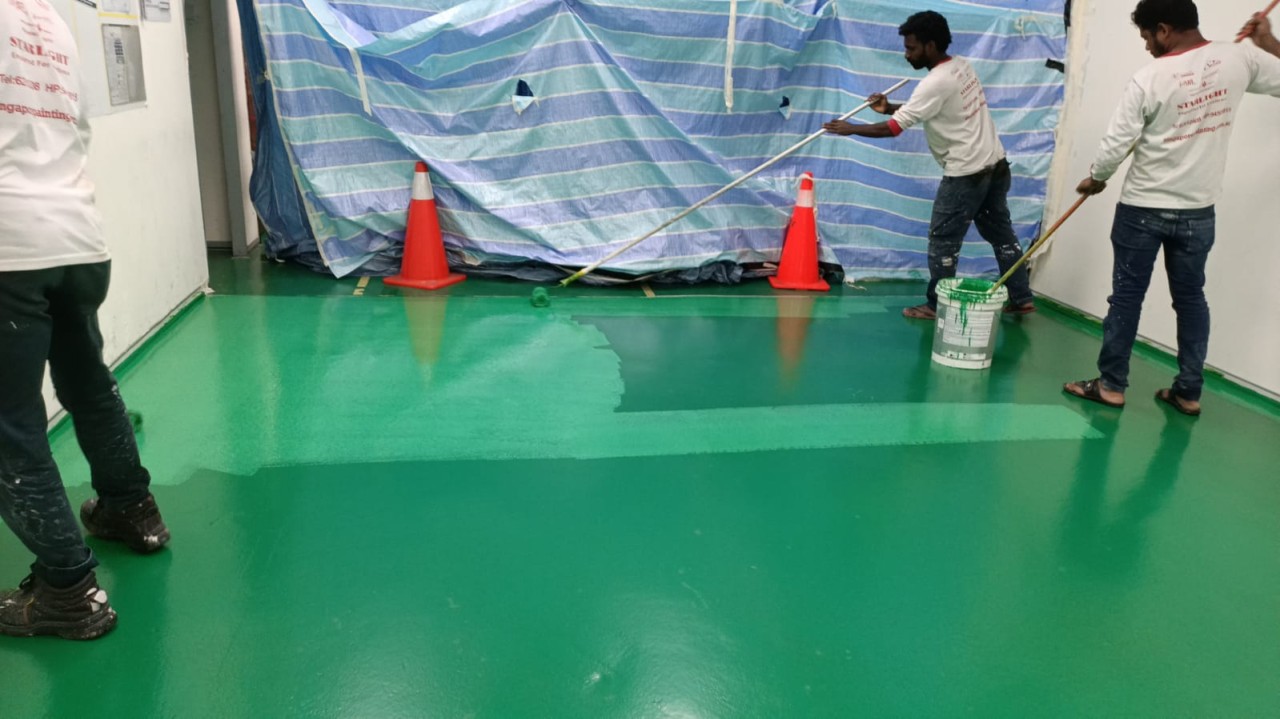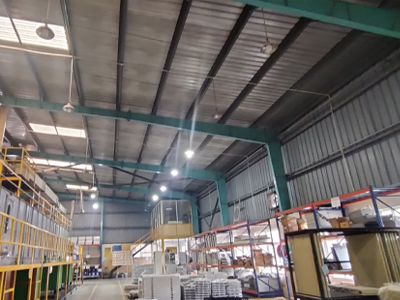The Hidden Strength of Glass Why Tempered Glass Is Not Unbreakable

Strong 8k brings an ultra-HD IPTV experience to your living room and your pocket.
Tempered glass is often seen as an embodiment of modern engineering marvel that combines strength, safety, and style. From smartphones to skyscrapers, its applications are everywhere. But have you ever wondered if this seemingly indestructible material can actually break? In this blog post, we'll unravel the science behind tempered glass, explore its strengths and potential vulnerabilities, and examine the conditions under which it might shatter.
Understanding Tempered Glass
Tempered glass is a type of safety glass that has been treated with heat or chemicals to increase its strength compared to standard glass. The process involves heating the glass to over 600 degrees Celsius, then rapidly cooling it. This creates a balance of internal stresses that make the glass much stronger and more resistant to impact.
The unique process not only enhances its durability but also alters how it breaks. When tempered glass does shatter, it breaks into small, blunt shards rather than jagged pieces, significantly reducing the risk of injury. This makes it a popular choice for locations where safety is a primary concern, such as car windows, shower doors, and glass facades.
The increased strength and safer breakage pattern are the main reasons why tempered glass is preferred in various applications. However, understanding its limitations is equally important to ensure its effective use and maintenance.
The Science of Tempering
Tempering involves a meticulous process that changes the glass at a molecular level. The heating phase causes the surface layer to expand, while rapid cooling locks the inner layers in tension. This tension is key to the glass's enhanced strength.
The tension within tempered glass is a double-edged sword. It can withstand significant force, but if the tension is disrupted—say, by a deep scratch or nick—it can fail spectacularly. This is because the entire sheet is under stress, so any flaw can cause the tension to release all at once, leading to shattering.
Additionally, the tempering process must be carefully monitored to avoid uneven stress distribution, which could weaken the glass. Properly tempered glass is incredibly durable, but slight errors in production can introduce vulnerabilities.
Understanding these scientific principles helps us grasp why tempered glass behaves the way it does and underlines the importance of precision in its manufacturing.
Common Uses of Tempered Glass
Tempered glass is ubiquitous in modern design and architecture due to its combination of strength and aesthetic appeal. It's commonly used in buildings, vehicles, furniture, and even consumer electronics like smartphones and tablets.
In construction, tempered glass is favored for windows, facades, and skylights due to its ability to withstand environmental stressors like strong winds and temperature fluctuations. Its safety features are also crucial in public spaces, reducing the risk of injury from accidental breakage.
In consumer products, the glass's scratch resistance and clarity make it ideal for screens and protective cases. Its capacity to withstand drops and impacts without shattering makes it a popular choice for gadgets that see everyday use.
These applications highlight the versatility of tempered glass and why it's a staple material in both functional and aesthetic design. Yet, knowing where it's used also clues us into the scenarios where its weaknesses might be tested.
Conditions Leading to Breakage
While tempered glass is robust, certain conditions can lead to its breakage. Understanding these can help prevent accidents and prolong its lifespan.
One common cause of breakage is edge damage. The edges of tempered glass are the most vulnerable due to the concentration of tension. Even a small chip or crack can compromise the glass’s integrity, potentially leading to breakage under relatively light pressure.
Another factor is thermal stress. Extreme temperature changes can cause the glass to expand or contract, creating stress that the glass might not withstand. This is particularly a risk in outdoor applications where glass is exposed to direct sunlight followed by rapid cooling, such as rain or shade.
The Role of Safety Features
Tempered glass is not just about strength; it's designed with safety in mind. The way it shatters into small granules reduces the potential for severe cuts and injuries, making it safer in the event of breakage.
Manufacturers also often incorporate additional safety features to enhance tempered glass’s resilience. Laminated coatings, for instance, can hold the pieces together even after breaking, preventing them from scattering and causing harm.
In some applications, like automotive glass, tempered panels may be combined with regular glass layers to create windshields that offer both clarity and improved safety. This multi-layer approach ensures that even if tempered glass fails, an additional layer is there to maintain structural integrity.
Strength Tests and Ratings
Before reaching consumers, tempered glass undergoes rigorous testing to ensure it meets safety standards. These tests simulate real-world conditions to verify the glass’s ability to withstand impacts, temperature changes, and other stressors.
Standard tests include impact resistance tests, where weighted balls are dropped onto the glass from various heights, and thermal shock tests, which expose glass to rapid temperature changes to assess its reaction.
The results of these tests determine the safety rating of the glass, with higher ratings indicating greater resilience. These ratings guide consumers in selecting the right type of tempered glass for their needs, ensuring they choose a product that can withstand the specific demands of its intended use.
Comparing Tempered Glass to Other Types
Tempered glass is often compared to other types of safety glass, like laminated glass and untempered (annealed) glass. Each has its strengths and weaknesses, but tempered glass is unique in its balance of safety and strength.
Laminated glass, for instance, is made of layers bonded with plastic, preventing it from shattering like tempered glass. It's often used in car windshields and places where security is a concern. While it’s more secure, it lacks the strength and scratch resistance of tempered glass.
Untempered glass, on the other hand, shatters into sharp shards, posing significant safety risks. It's generally weaker and less durable, making it unsuitable for applications requiring strength and safety.
Choosing between these types depends on the specific needs of a project or product. Tempered glass offers the best of both worlds for applications that demand strength and a reduced risk of injury upon breakage.
Real-Life Examples of Glass Failures
Despite its many advantages, there have been instances where tempered glass has failed in real-world scenarios, providing valuable lessons for future applications. Analyzing these failures helps us understand what can go wrong and how to prevent it.
In some cases, glass facades have shattered due to thermal stress, highlighting the need for proper installation that considers environmental factors. In others, building vibrations have caused glass to break, emphasizing the importance of considering all stressors during construction.
How to Protect Tempered Glass
To maximize the lifespan and safety of tempered glass, proper care and maintenance are essential. Here are some tips to keep tempered glass in top condition:
First, regularly inspect the glass for signs of damage, especially along the edges. Catching chips or cracks early can prevent further damage that might lead to breakage.
Next, ensure that the glass is installed correctly and that frames or supports are not exerting undue pressure on it. Improper installation can stress the glass and create points of vulnerability.
Finally, consider applying protective films or coatings, especially in high-risk areas. These can add an extra layer of protection against scratches and impacts, preserving the glass's integrity over time.
Innovations in Glass Technology
The field of glass technology is constantly evolving, with new developments enhancing the performance and applications of tempered glass. Recent innovations offer promising improvements in both durability and functionality.
One area of innovation is self-healing glass, which uses special polymers to repair minor scratches and damage, extending the life of tempered glass surfaces. This technology is already being tested in consumer electronics and could soon be applied to larger glass installations.
Choosing the Right Glass for Your Needs
Selecting the appropriate type of glass for a project is crucial to achieving the desired balance of safety, strength, and aesthetics. Tempered glass is often the go-to choice for many applications, but understanding its limitations and alternatives is key.
Consider the environment where the glass will be used. For areas exposed to extreme temperatures or high impact risks, tempered glass with additional protective features might be necessary. Alternatively, for projects prioritizing security over impact resistance, laminated glass could be preferable.
Consulting with experts in glass manufacturing and installation can provide valuable insights into the best option for specific needs. With the right guidance, users can harness the full potential of tempered glass while ensuring safety and durability.
Tempered Glass in Everyday Life
From the screens of our smartphones to the windows of our homes, tempered glass plays an integral role in our daily lives. Its combination of strength, safety, and clarity makes it indispensable in numerous applications.
In residential settings, tempered glass offers homeowners peace of mind with its robust safety features and versatility. From tabletops to shower enclosures, its benefits are felt throughout the home.
In commercial and industrial settings, tempered glass contributes to both aesthetics and function. Whether in high-rise buildings or retail storefronts, it provides transparency and protection that are crucial for modern design.
Conclusion
Tempered glass is a testament to human ingenuity, offering a blend of strength, safety, and style that few materials can match. While it is not indestructible, understanding its properties and limitations allows us to use it effectively and safely.
By exploring the science, applications, and future of tempered glass, we gain a deeper appreciation for this versatile material and its role in modern life. Whether you're selecting glass for a new project or simply curious about its capabilities, this knowledge empowers you to make informed decisions and maximize the benefits of tempered glass.
Note: IndiBlogHub features both user-submitted and editorial content. We do not verify third-party contributions. Read our Disclaimer and Privacy Policyfor details.







